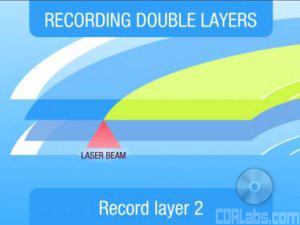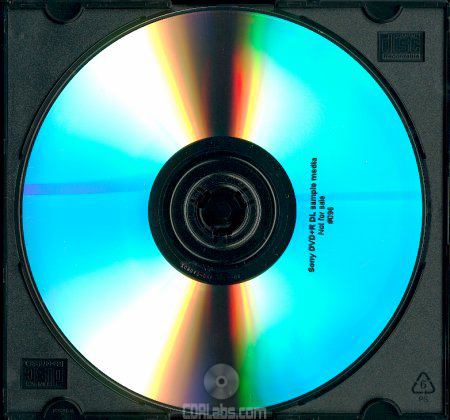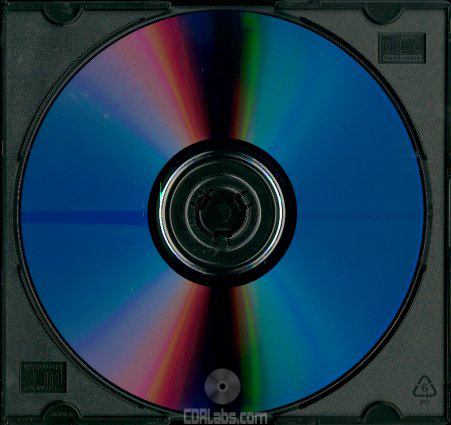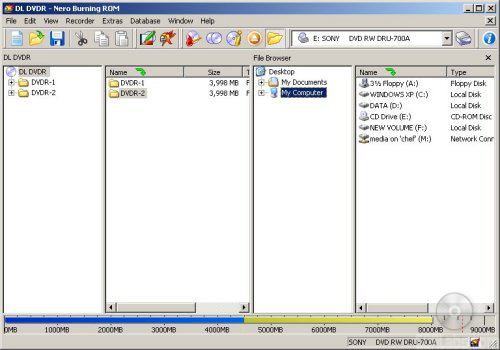Sony sent us a few DVD+R DL discs so we would be able to run some tests with the DRU-700A. By looking at the pictures below, you can see that double layer media doesn't really look any different than single layer discs. The dye color is very similar and the thickness of the discs is even about the same.
The DVD+R DL discs we received were manufactured by Mitsubishi Chemical Corporation. This really isn't too surprising considering they helped Philips develop this format. While Mitsubishi is expected to be the first company to offer DVD+R DL media, other manufacturers are expected to quickly follow suit once the technology takes off.
Looking at the DVDINFOpro screenshot above, you can see that DVD+R DL media uses an opposite track path, or OTP. What this means is that the drive starts writing at opposite ends of the disc, depending on the layer. For example, when writing to the first layer (L0), the drive starts at the inside of the disc, or hub, and moves outwards. When writing to the second layer (L1), it goes the opposite direction. It starts at the outside rim of the disc and move inwards, toward the hub. By doing it this way, a DVD player can quickly jump to the second layer when the end of the first layer is reached.
 |
 |
Within the last few months, a number of software companies have announced support for DVD+R DL media. Along with Ahead Software, companies like Roxio, Ulead, Sonic and VSO-Software have pledged support for this new technology. For this article though, we're going to focus on Ahead Software's Nero 6.
When you insert a double layer DVD+R disc into a drive like the DRU-700A, Nero will automatically adjust the maximum size of your compilation. Looking at the screenshot above, you can see that the status bar along the bottom goes all the way up to 9000MB. The status bar is also divided up into two colors (blue and yellow) to help show how full each layer is.
Writing First Layer
Writing Second Layer
While it took about 40 seconds before the DRU-700A actually started writing to the disc, the entire process went without a hitch. Switching between layers was also smoother than I expected. Sony's new drive went from one right to the other without even a hiccup.
Writing to DVD+R DL media isn't exactly the fastest process in the world. With a maximum writing speed of 2.4x, it took the DRU-700A about 44:35 to write 8001MB of data. If I would have written the same data to two single layer discs at 8x, it would have taken less than 18 minutes.









